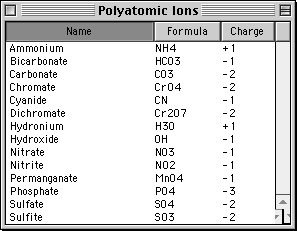For Students:
How does wave-particle duality affect our model of the arrangement of electrons in atoms?? So far we have discussed the simplistic version of a model of an atom with a nucelus, composed of protons and nuetrons and electrons orbiting around it. In Bohr's model of the atom, both the energy and location for the electrons in the atom can be described accurately. But, this is merely a simple view of what the atom really looks like. Werner Heisenberg and Max Born came up with the idea that, for something as tiny as an electron, and given that the electron has wave and particle properties, any attempt to determine accurately either the location or the energy will leave the other uncertain. In other words, you can definately know an electrons location or it's energy, but not both at the same time. This is now known as Heisenberg's uncertainty principle.
The importance of this idea is that we can asses only the likelihood or the probability of finding an electron with a given energy within a given region of space. This is the basis of quantum mechanics... next time we will discuss quantum numbers and orbitals!
For Parents:
The field trip was a great success.
The great lakes science center is a great place for schools and families alike. If you have not visited it, I would highly recommend it!









